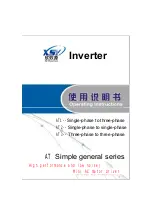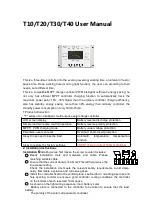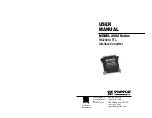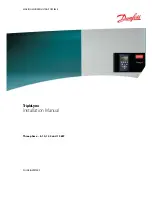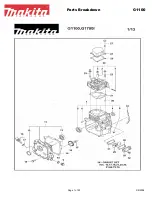
DGA-6000 ULTRA-HD VIDEO GENERATOR / ANALYZER USER MANUAL
B-9
Spatial Frequency Response (MTF) & Effective Resolution –
The nominal native-resolution of a fixed-
pixel display is defined by its pixel-grid dimensions, i.e. 3840 x 2160 pixels for 2160p display panels. But
effective video resolution (sometimes referred to as the Kell Factor) is a measure of the ability to discern
image detail. Effective resolution varies even though displays may have the same nominal native-resolution.
Effective video resolution is characterized by the ability to discern contrast (difference in luminance) between
narrow lines of sinusoidal intensity. Another term for that contrast is modulation depth. The narrower the
width of the lines, the higher their spatial frequency, and the finer the image detail appears. Spatial
frequency response is therefore a measure of the contrast modulation depth as spatial frequency increases,
and that is called the Modulation Transfer Function (MTF).
In general, the higher the spatial
frequency before the MTF starts to
roll off the better the display
sharpness. But detail is normally
still visible until the MTF reaches
about 10% of its low frequency
modulation depth. That point is
called the effective or limiting
resolution. So depending on the
shape of the MTF, a visually
sharper display (Display A) could
have a lower limiting resolution
(Display B has a higher limiting
resolution in this example.)
The motion test patterns can be
used to characterize a display
(with and without motion) by
visually determining the frequency
(resolution) where the MTF starts
to visibly decline and the highest
frequency (limiting resolution) that
can be discerned.
The spatial frequency response rolls off as the frequency increases for a variety of display technology and
video processing related reasons. Focus, convergence, and lens aberrations in front projectors, and pixel
aperture in flat panels are a few of the physical factors that affect the Modulation Transfer Function (MTF).
Video processing, such as scaling and overscan, normally include spatial low-pass filtering to reduce
aliasing artifacts, while detail enhancement and sharpness processing include linear or non-linear filtering.
All of those effects occur with or without motion. De-interlacing, frame-interpolation (smooth-motion
processing), and other display processes used for specific technologies (DLP, LCoS, Plasma, LCD, etc.)
can produce additional motion filtering effects (as well as other artifacts).
Sinusoidal video signals are used to observe and measure MTF and to determine limiting resolution. Optical
equipment to precisely measure an entire MTF curve is expensive and best done in a laboratory
environment. However, the DGA-6000 motion patterns include sinusoidal signals that produce Circular and
Hyperbolic Zone Plates, Linear Horizontal and Vertical Frequency Sweeps, and Horizontal and Vertical
Resolution Wedges for visually determining where the spatial frequency response (MTF) begins to roll-off,
and the effective (limiting) resolution for both static and moving images. Hence, the user can characterize
and compare displays and video processors.


















